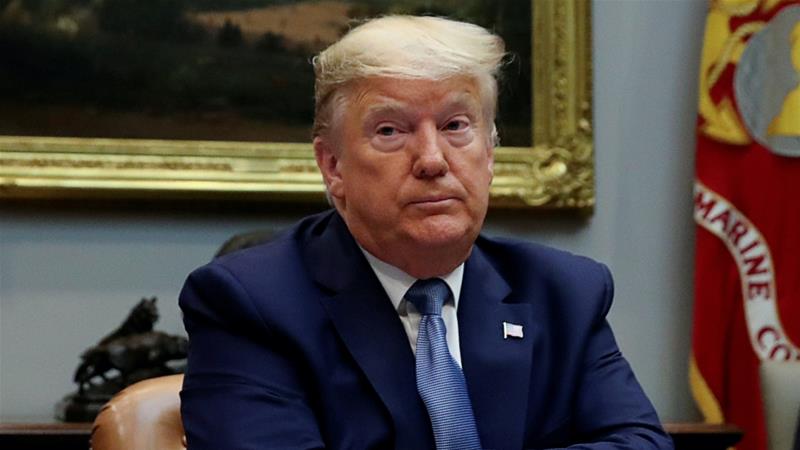New York: United States (US) President Donald Trump was warned about the potential for a pandemic but he repeatedly played down the seriousness of the virus and focused instead on controlling the message, protecting gains in the economy and batting away warnings from senior officials, a lengthy investigative report in ‘The New York Times’ has said.
The report in ‘The New York Times’ (NYT) revealed that there were warnings from the intelligence community, national security aides and government health officials about an impending pandemic and its consequences but Donald Trump played down the crisis.
“An examination reveals President Donald Trump was warned about the potential for a pandemic, but internal divisions, lack of planning and his faith in his own instincts led to a halting response, the NYT said in its report.
The US is the worst-hit country in the world with over 530,000 COVID-19 cases and 20,608 fatalities, according to Johns Hopkins University data.
“Top White House advisers as well as experts deep in the Cabinet departments and intelligence agencies all sounded alarms and urged aggressive action to counter the threat from the coronavirus, but President Trump remained slow to respond,” it said.
Donald Trump’s views were ‘coloured’ by long-running disputes inside the administration over how to deal with China and his own suspicion of the motivations of officials inside what he viewed as the ‘Deep State’.
Further, recommendations from public health officials often competed with economic and political considerations in internal debates, slowing the path toward belated decisions. The ‘NYT’ report said that the National Security Council officials received the warnings in early January about the potential dangers from a new virus in Wuhan, China.
“The State Department’s epidemiologist warned early that the virus could develop into a pandemic, while the National Centre for Medical Intelligence, a small outpost of the Defense Intelligence Agency, reached the same conclusion,” the report said.
“Some of the earliest warnings came from national security hawks eager to blame China, and they often ran into opposition from the president’s economic advisers, who were concerned about upsetting relations with China at a time when Trump was negotiating a trade deal with Beijing,” the report said.
Trump’s top trade adviser Peter Navarro wrote in a ‘searing memo’ at the end of January arguing that a pandemic caused by the virus could cost the US dearly, warning that as many as half a million people could die and economic losses could be in trillions of dollars. The memo had said that in a worst-case scenario, 30 per cent of the US population would be infected with the virus, leading to the ‘deaths on the order of a half-a-million American souls’.
In recent days, Trump has denied that he saw the memo at the time but a ‘report reveals that aides raised it with him at the time and that he was unhappy that Navarro had put his ideas in writing’.
The NYT examination also found that the US lost three weeks at a crucial time. “By the third week in February, the administration’s top public health officials had concluded that it was time to begin shifting to a more aggressive strategy to mitigate the spread of the virus, including social distancing, stay-at-home orders and school closures,” the NYT report pointed out.
But they never got the chance to present the plan to the president. An official at the Centres for Disease Control and Prevention went public with dire warnings too soon, sending stocks tumbling and angering Trump, who pushed aside his health and human services secretary and put Vice-President Mike Pence in charge of the response,” the report added.
It would be three weeks later when Trump finally recommended aggressive social distancing guidelines, ‘a period when the virus spread largely unimpeded and the task force was trying to avoid alarmist messages like the one that had angered the president’.
The NYT report also noted that the White House was ‘divided’ over how to respond.
“The president was surrounded by divided factions in March even as it became clearer that avoiding more aggressive steps to stop the spread of the virus was not tenable,” it said.
PTI
